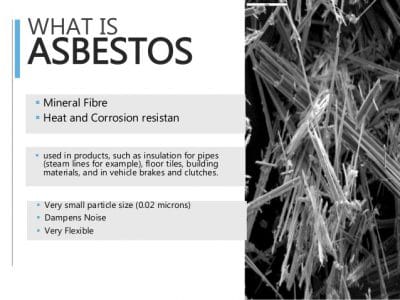
Asbestos Assessments
The advantages of asbestos usage come with the dangers of being exposed to this material. Inhaling asbestos particles results in health conditions that can be life-threatening. Fine particles of asbestos are barely noticeable to the naked eye, making it hard for patients to identify if they’ve been extremely exposed to such particles.
When asbestos-related diseases develop, it is usually because millions of microscopic mineral fibres have accumulated in a person’s lung tissue or a membrane lining in the body. No amount of asbestos exposure is considered safe, and people should always take precautions to avoid inhaling toxic dust.
However, most asbestos-related diseases arise only after many years of regular exposure. An extremely intense short-term exposure also heightens the risk of disease later in life. After exposure occurs, asbestos cannot be removed from the lungs. Preventing further harm to the respiratory system can lower the chances of disease developing or slow down the progress of an existing disease.
Asbestos has been incorporated into thousands of products, such as building materials, automotive parts and consumer items. Industries frequently use asbestos for its durability and fire-resistant qualities. It was a popular additive to products, particularly from the 1930s to the mid-1970s.
Asbestos may still be present in homes and buildings built before 1980. Asbestos fibres are not visible to the human eye and can be difficult to identify. It’s important for people to be aware of common materials that may contain asbestos to prevent exposure.
In addition to lung cancer and mesothelioma, asbestos exposure can also cause cancer of the larynx and ovary. Current evidence also suggests asbestos exposure may cause cancer of the pharynx, stomach, and colorectum. Enlargement of the heart can also occur indirectly from the increased resistance of blood flow through the lungs.
The health risk that may be presented to employees with regard to asbestos exposure in the workplace is governed by the Asbestos Regulations, OHS Act (85 of 1993).
The Act requires, amongst other things, the following:
- An Asbestos Risk Assessment must be conducted.
- Written, safe work procedures must be laid down and followed during maintenance, repairs, alterations and dismantling of buildings that contain asbestos cement sheeting and related products.
- A written inventory of the location of asbestos in workplaces, plants or premises must be made and maintained.
- A Plan of Work, that has been approved by an Approved Asbestos Inspection Authority, must be followed during work involving raw asbestos, such as stripping of asbestos insulation.
If asbestos is identified, Strat Environment can recommend next steps. An asbestos abatement company can encapsulate the asbestos or remove and dispose of the material safely.
NB: Only asbestos abatement professionals should handle, remove and dispose of asbestos. Abatement professionals can safely handle asbestos by following regulations. Mishandling asbestos may lead to asbestos exposure. Individuals exposed to asbestos may develop mesothelioma and other asbestos-related diseases.
Learn more about asbestos exposure issues and how they can be resolved, by signing up for an official assessment from Strat Environment.
Sources:
https://healthiack.com/health/asbestos-removal-harmful-effects-of-asbestos-exposure
https://www.asbestos.com/asbestosis/treatment/
https://www.ccohs.ca/oshanswers/chemicals/asbestos/effects.html
https://www.asbestos.com/exposure/short-term/
https://www.mesothelioma.com/asbestos-exposure/handling/
https://www.maacenter.org/asbestos/handling/
https://www.mayoclinic.org/diseases-conditions/asbestosis/diagnosis-treatment/drc-20354643
https://www.atsdr.cdc.gov/asbestos/health_effects_asbestos.html
Enquire
